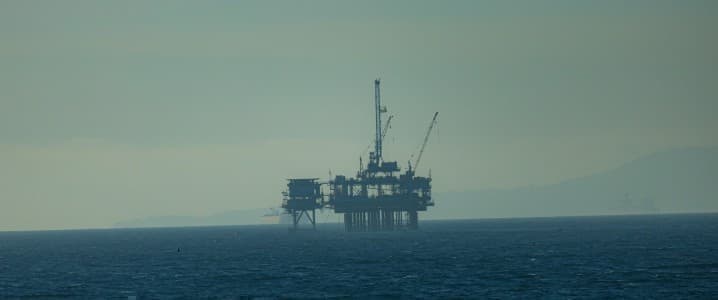When people talk about oil majors, the same names always come up—Exxon, Chevron, Shell, Aramco. But geopolitics and barrel math don’t run solely on brand recognition. There’s a whole class of mid-tier players and state-run oil companies operating in the shadow of the supermajors—quietly shaping energy flows, regional alliances, and even global trade.
Here are 10 oil companies punching well above their weight—and why you should be paying attention.
ONGC (India)
India’s National Champion with a Refining Ambition
Oil and Natural Gas Corporation Limited (ONGC) isn’t a household name outside India, but it should be. As the country’s largest oil and gas explorer, ONGC is already a central player in Asia’s fastest-growing energy market. And it’s not content staying upstream.
This week, ONGC confirmed it’s conducting a pre-feasibility study for a brand-new refinery in Jamnagar, Gujarat, that could process 200,000 to 240,000 barrels per day. That’s a direct play in a region already dominated by Reliance Industries’ massive refining complex. The move signals ONGC’s ambition to stake out downstream territory and lock in market relevance as India prepares to become the world’s top driver of oil demand growth through 2050, according to OPEC.
India isn’t transitioning away from fossil fuels anytime soon. In fact, the country plans to expand its refining footprint to become a regional hub—supplying not just its surging middle class, but fuel-hungry neighbors, too. With ONGC now eyeing vertical integration, it’s clear this is more than a national oil company. It’s an emerging force with geopolitical clout and ambitions that extend far beyond the subcontinent.
Pemex (Mexico)
Debt-Burdened, Politically Entrenched—and Still a Global Swing Factor
Petróleos Mexicanos, better known as Pemex, is the financial equivalent of a piñata at a creditors’ convention—but don’t write them off just yet. Despite losing $2 billion in Q1 and a staggering $9.1 billion the quarter before, Pemex still holds the keys to one of the Western Hemisphere’s largest reserves. And what it does—or fails to do—matters for the global market.
This year alone, Pemex has announced plans to cut 3,000 jobs, restructure its org chart, and reopen thousands of idled wells to reverse a decade-long production decline. With output slipping to 1.58 million bpd—down nearly 10% from a year ago—every extra barrel Pemex can coax from its aging fields is meaningful in a market that’s watching Latin American supply with growing interest.
Pemex, for all its fiscal chaos, remains a cornerstone of Mexico’s nationalist energy strategy—and a wildcard in oil geopolitics. It’s also one of the few NOCs that refinances losses through federal lifelines rather than privatization, which means policy—more than price—drives its behavior. That gives Pemex a uniquely volatile role on the world stage.
Lukoil (Russia)
A Sanctions Dodger Still Swinging in Global Markets
While Rosneft soaks up most of the geopolitical spotlight, Lukoil remains Russia’s largest private oil company—and a master of quiet influence. Despite not being sanctioned by the West, Lukoil’s trading arm Litasco was effectively paralyzed after the Ukraine invasion, blackballed by banks and insurers terrified of reputational risk.
Now in 2025, Litasco is staging a comeback—distancing itself from its Russian parent, pledging to avoid Russian-origin cargoes, and reestablishing trade across the Americas. It’s already secured $2 billion in fresh credit lines, giving it just enough runway to resume operations that were dormant for two years.
Meanwhile, rumors of a Rosneft-led megamerger were swatted away last fall, with both companies denying any talks—though the fact that the market took the idea seriously says a lot. Add in drone attacks on Russian refining assets, and Lukoil’s ability to stay operational and engaged in Western markets makes it a geopolitical tightrope act—and one that matters more than ever.
Talos Energy (U.S./Mexico)
The Gulf’s Most Politically Awkward Power Player
Talos is tiny compared to the majors, but its fingerprints are all over one of the Gulf’s most geopolitically sensitive assets: the Zama oil field, a billion-barrel prize straddling U.S.-Mexico waters. After years of legal battles, Talos was sidelined as operator by Pemex—but it still holds a 17.4% stake and a seat at the table through its Mexican subsidiary, Talos Mexico. Meanwhile, the company is expanding its reach via carbon capture partnerships and midstream acquisitions, making it a growing player in cross-border energy logistics. Talos may not be big, but it knows how to show up where it counts.
Sonatrach (Algeria)
Europe’s Quiet Gas Lifeline
When Russia turned off the taps, Europe turned to Algeria—and Sonatrach delivered. The state-owned firm ramped up exports to Italy and Spain, hiked prices, and secured new infrastructure deals while Brussels scrambled for LNG. With eyes on Sub-Saharan expansion and a firm grip on North African supply routes, Sonatrach now holds more sway over Europe’s energy mix than at any time in decades. It’s not flashy, but it doesn’t need to be. In a world short on swing producers, Sonatrach is suddenly indispensable.
They don’t get the headlines or the shareholder calls, but these companies move markets, sway policy, and quietly reshape global energy flows. Whether it’s a debt-addled dinosaur reopening ancient wells, a private Russian firm sidestepping sanctions, or a mid-size Gulf player wedged into international border drama, they all prove the same point: influence in the oil world isn’t about size—it’s about leverage. These are the names that matter, whether you’re watching barrels, borders, or balance sheets.
By Julianne Geiger for Oilprice.com
More Top Reads From Oilprice.com
